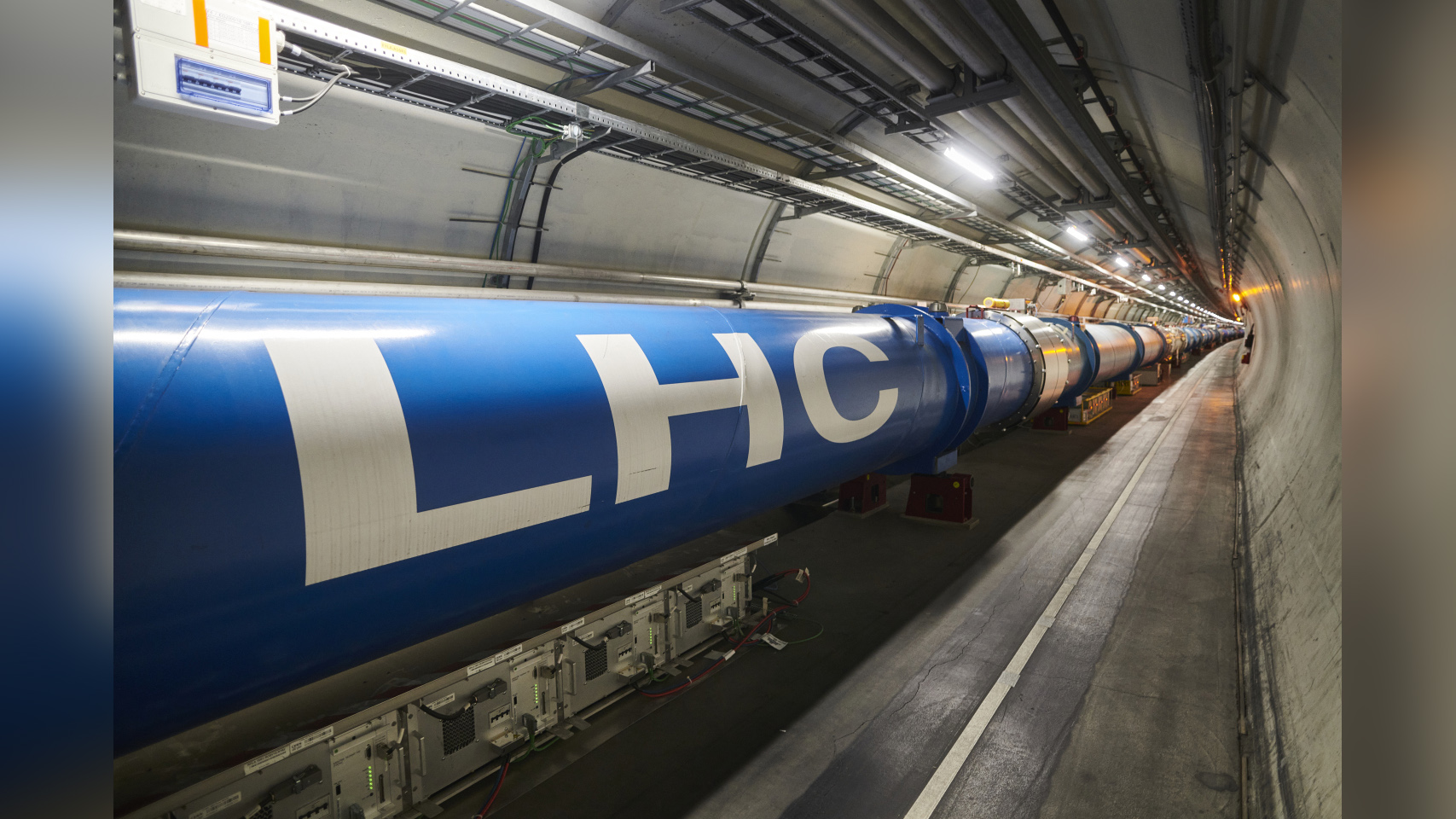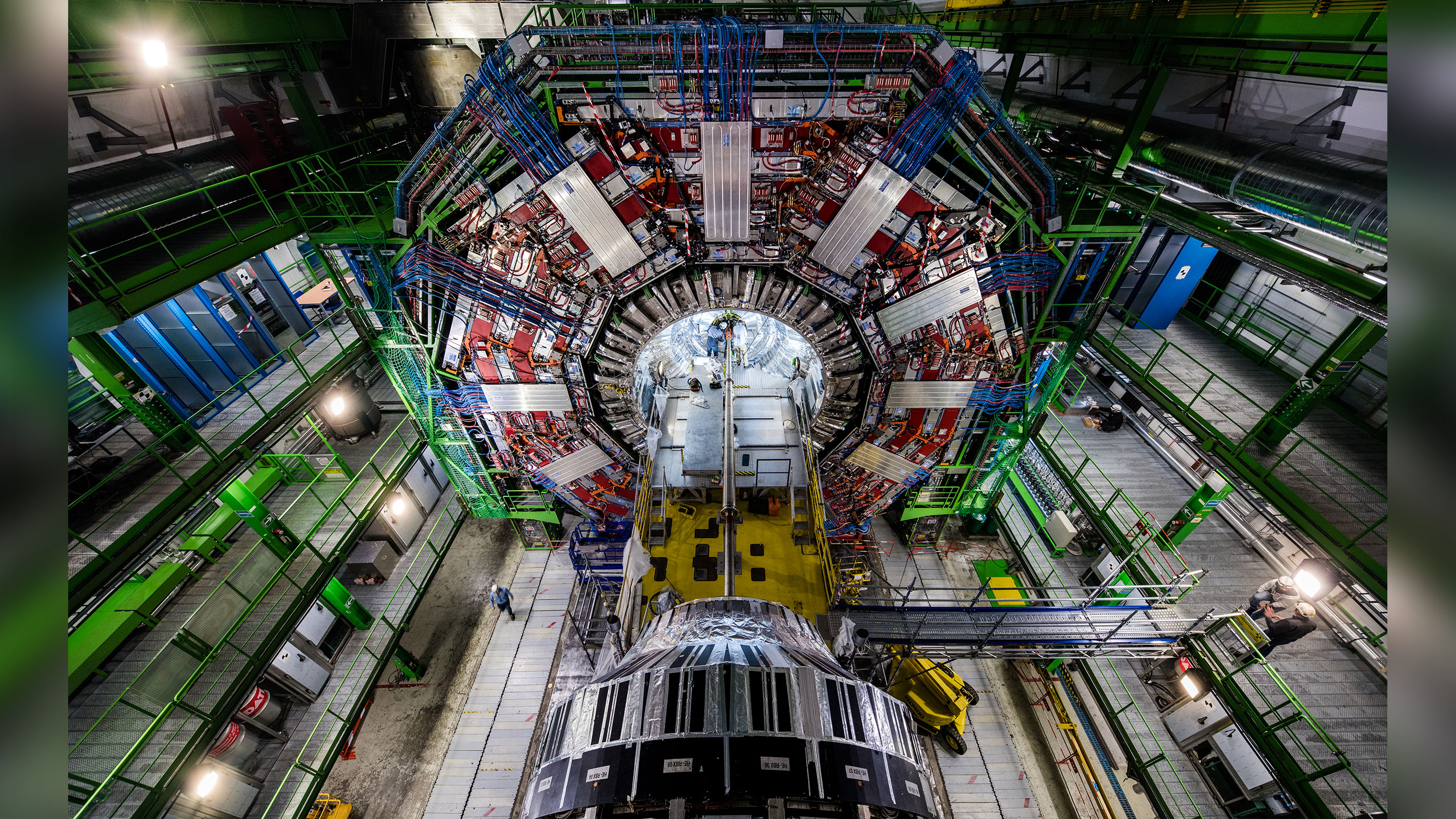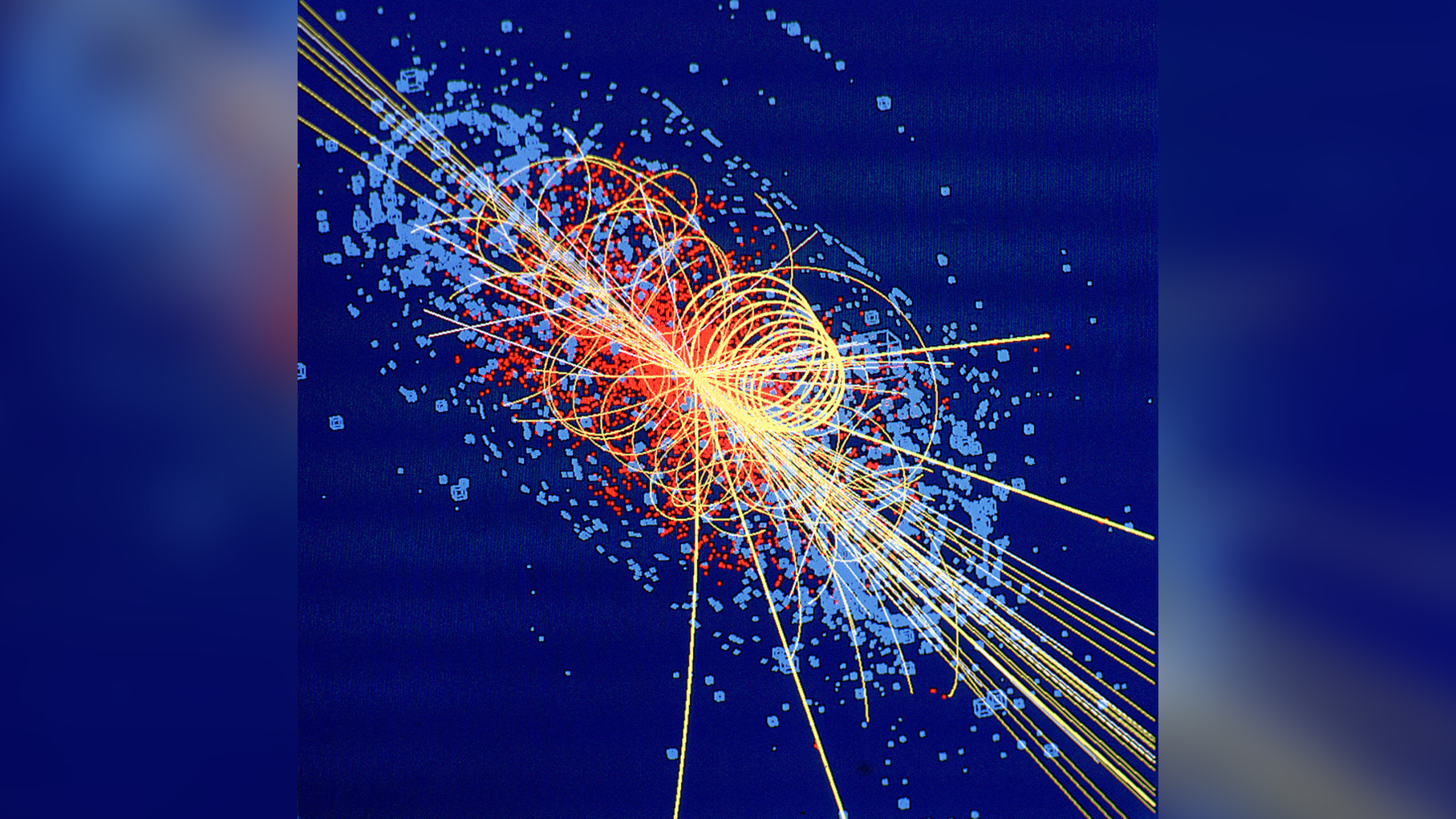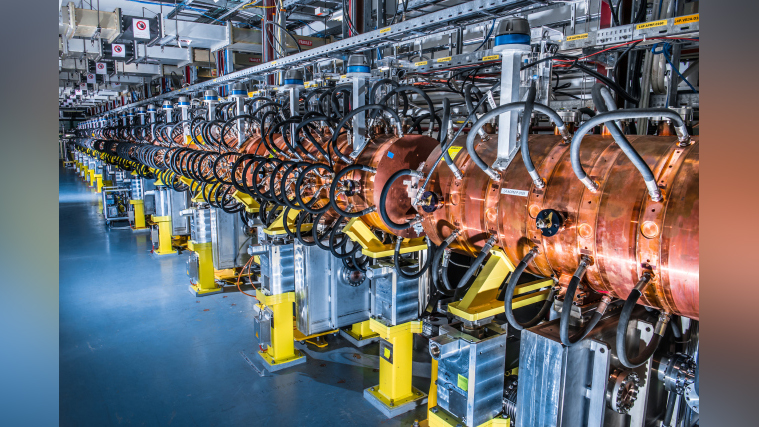What is the Large Hadron Collider?
The world's most powerful atom smasher has made some groundbreaking discoveries.

The Large Hadron Collider (LHC) is the world's largest particle collider: a marvel of modern particle physics that has enabled researchers to plumb the depths of reality. In 2012, the massive atom smasher, a 16.5-mile-long (27 kilometers) underground ring on the border of France and Switzerland, allowed researchers to find evidence for the famous Higgs boson and has since led to many other discoveries.
How long did it take to build the Large Hadron Collider?
The origins of the LHC stretch all the way back to 1977, when Sir John Adams, the former director of the European Organization for Nuclear Research (CERN), suggested building an underground tunnel that could accommodate a particle accelerator capable of reaching extraordinarily high energies, according to a 2015 history paper by physicist Thomas Schörner-Sadenius.
The project was officially approved 20 years later, in 1997, and construction began on the ring that passed beneath the French-Swiss border capable of accelerating particles up to 99.99% the speed of light and smashing them together. Within the ring, 9,300 magnets guide packets of charged particles in two opposite directions at a rate of 11,245 times a second, finally bringing them together for a head-on collision, according to CERN. The facility is capable of creating around 600 million collisions every second, spewing out incredible amounts of energy and, every once in a while, an exotic and never-before-seen heavy particle. The LHC operates at energies 6.5 times higher than the previous record-holding particle accelerator, Fermilab's decommissioned Tevatron in the U.S.
The LHC cost a total of $8 billion to build, $531 million of which came from the United States. More than 8,000 scientists from 60 different countries collaborate on its experiments. The accelerator first switched on its beams on Sept. 10, 2008, colliding particles at only a ten-millionth of its original design intensity. It turned off in 2018 for upgrades, and switched on again on April 22, 2022, with higher power and double the collision rate. The goal is to ramp up the energy of the collisions to a record-breaking 13.6 TeV.
Could the Large Hadron Collider destroy the world?
Before it began operations, there were fears that the new atom smasher would destroy Earth, perhaps by creating an all-consuming black hole. But any reputable physicist would state that such worries are unfounded.
"The LHC is safe, and any suggestion that it might present a risk is pure fiction," CERN Director General Robert Aymar previously told Live Science.
That's not to say the facility couldn't potentially be harmful if used improperly. If you were to stick your hand in the beam, which focuses the energy of an aircraft carrier in motion down to a width of less than a millimeter, it would make a hole right through it and then the radiation in the tunnel would kill you.
Get the world’s most fascinating discoveries delivered straight to your inbox.
What has the LHC found?
Over the last 10 years, the LHC has smashed atoms together for its two main experiments, ATLAS and CMS, which operate and analyze their data separately. This is to ensure that neither collaboration is influencing the other and that each provides a check on their sister experiment. The instruments have generated more than 2,000 scientific papers on many areas of fundamental particle physics.
On July 4, 2012, the scientific world watched with bated breath as researchers at the LHC announced the discovery of the Higgs boson, the final puzzle piece in a five-decade-old theory called the Standard Model of physics. The Standard Model tries to account for all known particles and forces (except gravity) and their interactions. Back in 1964, British physicist Peter Higgs wrote a paper about the particle that now bears his name, explaining how mass arises in the universe.
The Higgs is actually a field that permeates all of space and drags on every particle that moves through it. Some particles trudge more slowly through the field, and this corresponds to their larger mass. The Higgs boson is a manifestation of this field, which physicists had been chasing after for half a century. The LHC was explicitly built to finally capture this elusive quarry. Eventually finding that the Higgs had 125 times the mass of a proton, both Peter Higgs and Belgian theoretical physicist Francois Englert were awarded the Nobel Prize in Physics in 2013 for predicting its existence.
Even with the Higgs in hand, physicists can't rest because the Standard Model still has some holes. For one, it doesn't deal with gravity, which is mostly covered by Einstein's theories of relativity. It also doesn't explain why the universe is made of matter and not antimatter, which should have been created in roughly equal amounts at the beginning of time. And it is entirely silent on dark matter and dark energy, which had yet to be discovered when it was first created.
Before the LHC turned on, many researchers would have said that the next great theory is one known as supersymmetry, which adds similar but much more massive twin partners to all known particles. One or more of these heavy partners could have been a perfect candidate for the particles making up dark matter. And, supersymmetry begins to get a handle on gravity, explaining why it is so much weaker than the other three fundamental forces. Prior to the Higgs' discovery, some scientists were hoping that the boson would end up being slightly different than what the Standard Model predicted, hinting at new physics.
But when the Higgs turned up, it was incredibly normal, exactly in the mass range where the Standard Model said it would be. While this is a great achievement for the Standard Model, it has left physicists without any good leads to go on. Some have begun to talk about the lost decades chasing down theories that sounded good on paper but seem not to correspond to actual observations. Many are hoping that the LHC's next data-taking runs will help clear up some of this mess.
What is the LHC doing now?
The LHC shut down in December 2018 to go through two years of upgrades and repairs. The plan to restart the facility was delayed by the onset of the COVID-19 pandemic, according to CERN. Finally, on April 22, 2022, the LHC began preparing to explore the cutting edge of particle physics once more. The giant collider ring fired up after its three-year nap, and is now more powerful than ever, Live Science reported. The accelerator will be able to smash atoms together with a slight increase in energy but at double the number of collisions per second.
Data from previous runs of the LHC has been used to spot ghostly neutrinos inside the machine for the first time ever, mysterious primordial ‘X’ particles from the dawn of time, and a strange pattern that can’t be explained by our current understanding of the universe.
In the new run, called Run 3, two new experiments will come online: FASER and SND@LHC. With these experiments inside the LHC, physicists will look for physics "beyond the Standard Model." In addition, special proton–helium collisions will show how often anti-protons are produced to explain why matter overtook the universe; collisions involving oxygen ions should shed light on cosmic rays and a state of matter called quark-gluon plasma that is thought to have existed right after the Big Bang.
And of course, there is already talk of an even more powerful particle accelerator to replace it, situated in the same area but four times the LHC's size. The enormous replacement could take 20 years and $27 billion to construct
Additional resources
- Take a virtual tour of the LHC at CERN’s website
- Read more about the science of the accelerator from CERN.
- Check out this collection of Higgs images.
Editor's note: This article was updated on April 25, 2022.

Adam Mann is a freelance journalist with over a decade of experience, specializing in astronomy and physics stories. He has a bachelor's degree in astrophysics from UC Berkeley. His work has appeared in the New Yorker, New York Times, National Geographic, Wall Street Journal, Wired, Nature, Science, and many other places. He lives in Oakland, California, where he enjoys riding his bike.





